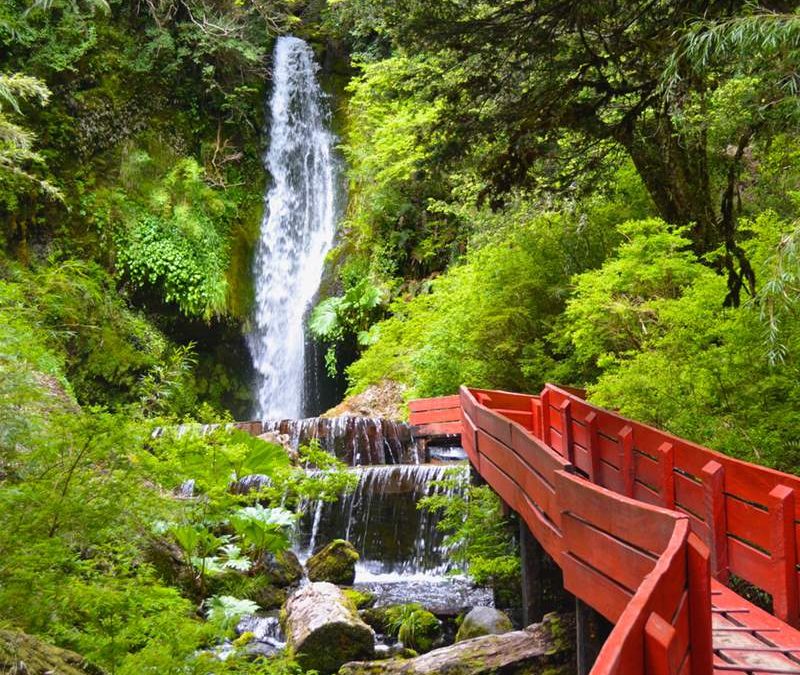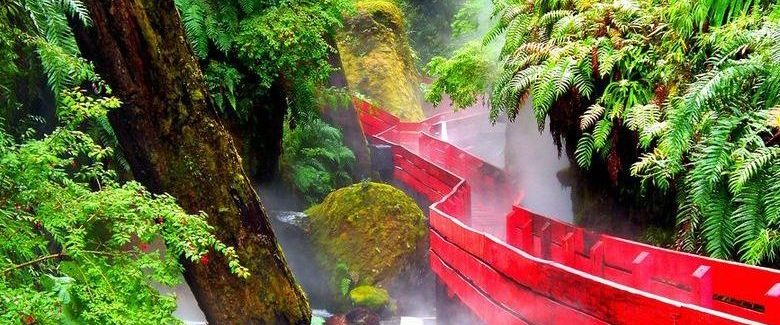
Chile
Written on 17th July, 2019It’s early June. The 2018 Chelsea Flower Show has only just been broken down, and I’m already planning for a return to Main Avenue, having taken up my sponsor’s offer of another garden (“We’re up for it if you are!”). Now firmly bitten by the botany bug, I have a drink with Dave Root from Kelways Plants to discuss options.
“Dave I’ve been asked to design another destination focused garden for next year. Fynbos was bloody hard to pull off this year. If you could choose, which part of the world has plants that are easy to source and which would give you fewer sleepless nights next time round?”
“How about Chile?” comes back the response.
And so begins my research. Chile is a very long thin country with a huge range of climatic conditions, ranging from hot and arid in the north, right the way down to alpine and cold in the south. Somewhere in the middle is the ‘Goldilocks zone’ (to borrow an astronomical ‘planet hunting’ phrase), where the conditions are just right for plants that grow in the UK (and are therefore freely available), and well known, my two conditions for deciding on which part of the world to bring to Chelsea.
I zone in on the temperate rainforests, about half way down the country, south of Santiago. And, sure, enough, I discover a land of snow-capped mountains covered in ancient forests and dense vegetation, dotted with dramatic waterfalls, and serene, gin clear lakes, along with a delightful mix of potential plants to use; Monkey puzzles, fuchsias, gunneras, alstromerias and libertias, to whet the appetite. http://www.chileflora.com/ is a great reference, run, I believe, by a Russian botanist living in some remote outpost in of one of Chile’s national parks.
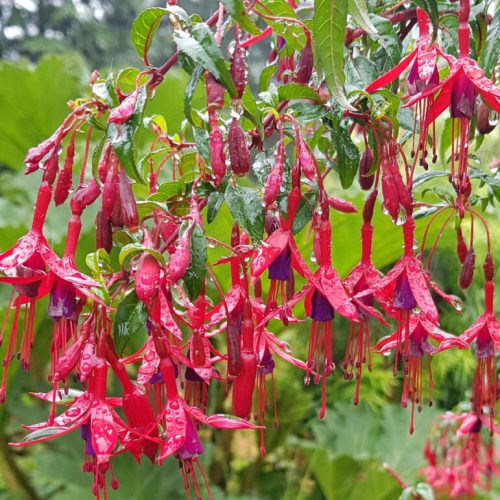
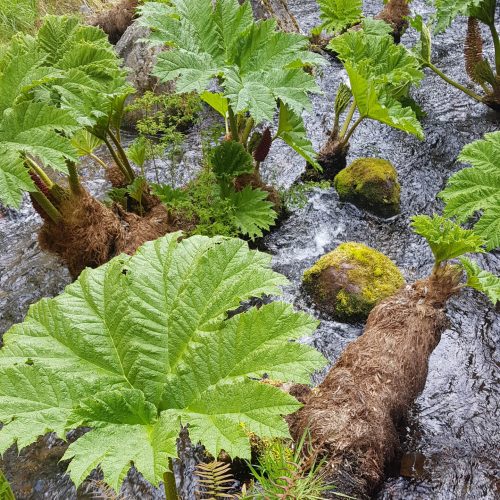
This all sounds very exciting in theory, but of course no decisions can be made without a field trip, all in the name of research, of course. I constantly find myself thinking how lucky I am to be able to work like this. Of course, it has taken a while to get to the position where I can travel the world, doing something I love and (sort of) get paid for it but it’s still a buzz to be able to carve this niche for myself.
We fly to Santiago in November, and from there to Temuco, the promisingly named Araucanía airport (the botanical name for a Monkey puzzle tree is Araucaria Araucana). A four hour drive into the mountains (managing to get stuck in a river en route), ends at the Refugio Tinquilqo a cosy timber clad mountain lodge in the heart of the Huerquehue National Park, run by an ex film director named Patricio who will be able to set us off each day on different routes around the wilderness.
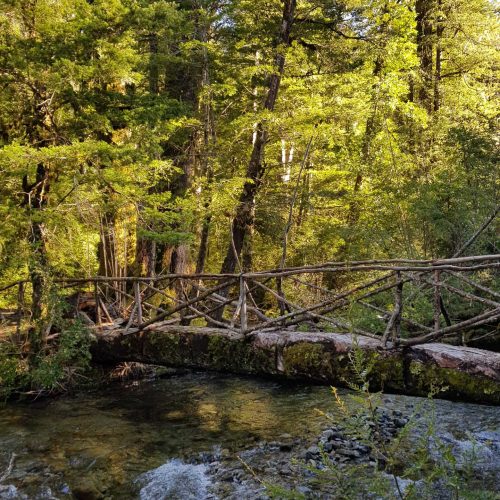
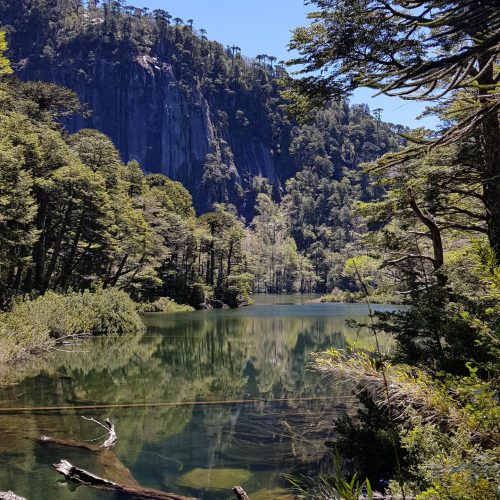
And boy, what wilderness. Each day we set off from the refuge, in glorious cold sunshine, daysacks weighed down with huge doorstop sandwiches and bellies full of breakfast. We spotted Calceolarias, growing between wet cracks in the rocks, in the shade, diminutive gunnera magellanica, sprawling over a wet patch of ground, in a nothofagus forest at about 2000m, and the larger, better known gunnera manicata, growing literally everywhere where we see water; by the side of lakes and rivers, and, most impressively, hanging out of the sides of waterfalls, high up on rock faces. If you want proper green wall inspiration (ie. not something plastic stuck onto the side of a shopping mall) and can’t get into Patrick Blanc’s studio, here is where you’ll find it. The waterfalls remind me of scenes from Jurassic park, and I half expect to be dive bombed by Pterodactyls at any moment.
Fuchsias are everywhere. Once a popular plant in the 80’s (at least I remember my mother being obsessed with them around that time), they have fallen out of fashion but I have no idea why really. The beautiful nodding flowers go on for ages (but obviously refuse to flower during Show Week, as I am to find out later) and they seem to love damp and shady conditions.
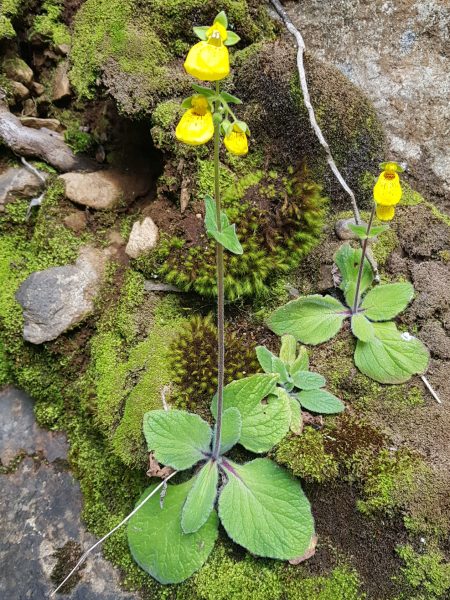
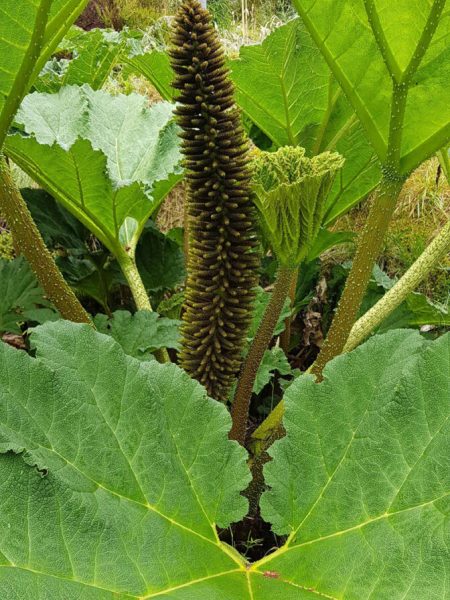
There are lots of other plants that we spot, like Embothrium coocineum, the Chilean fire tree, and Lomatia ferruginea, the part tree part fern tree (nothing like a tree fern though). Eucryphias and Drimys are on my hit list too, but none of these are either available at a decent size in the UK, or will flower on time. Nymans garden has a great selection of mature Chilean plants if you are ever in Sussex and fancy tracking them down in the walled garden there.
One fern however is available, and a must: Lophosoria quadripinnata, which is a majestic fern that is similar to the Dicksonia antarctica of south east Australia, but without the trunk. In fact quite a few plants from this region of Chile have what is known as ‘Gondwanan lineage’; they or other members of the same family are found in other southern hemisphere countries as they evolved before the break up of Pangaea, millions of years ago.
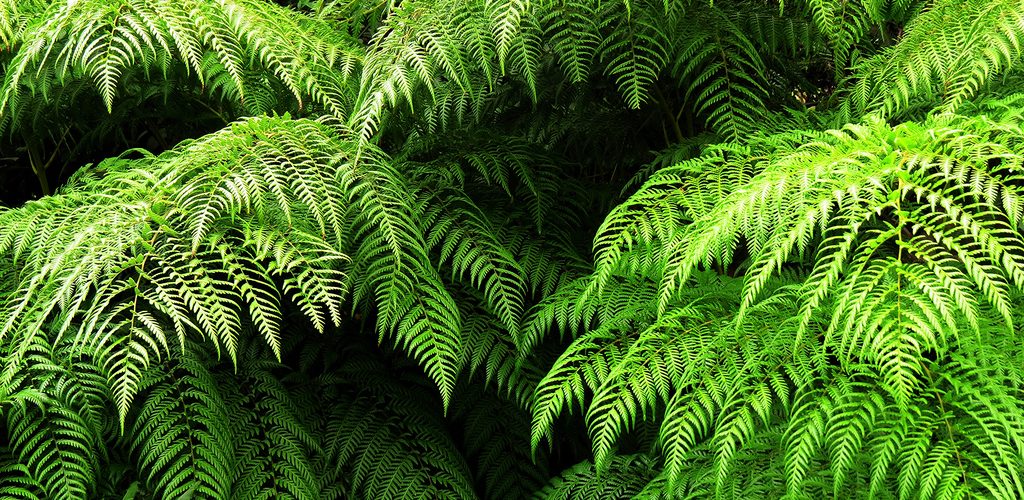
We spot alstroemerias which are known in the UK as a cut flower, but in their natural habitat, grow like Foxgloves, en masse, carpeting the floor, at the edge of a woodland. Also Geum chiloense, which favours shady moist conditions and from which so many geums that flower all summer in our gardens are partly bred (‘Mrs Bradshaw’, ‘Totally tangerine’, ‘Princess Juliana’ to name a few). Libertia chilensis is another well-known plant that seems to tolerate a wide range of conditions, finding its way into gravel garden schemes in the UK, but spotted again in dappled shade to more open areas and damper conditions than I would have expected, growing as a clumpy groundcover. And finally sisyrinchium striatum which prefers a slightly more open aspect with its sword like leaves and yellow flowers in summer.
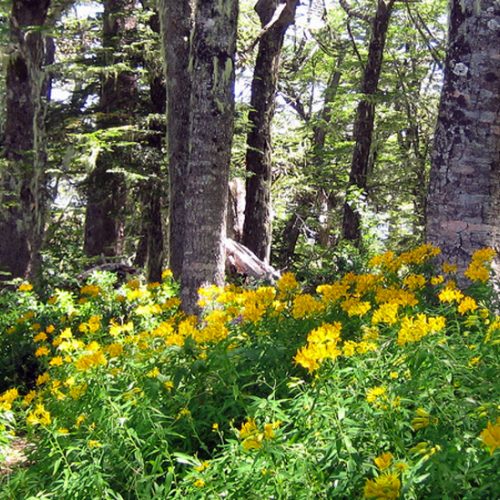
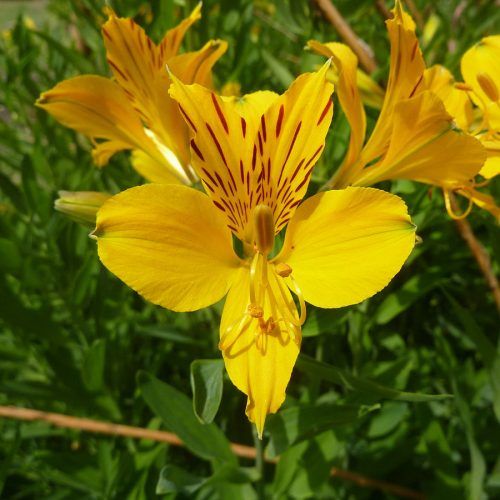
Some plants that grow in this region of Chile are introduced species, mainly by early settlers from the 16th Century onwards, who accidentally brought in seeds of foxgloves, hypericum, elder and geranium, to name a few, in their coats of their livestock. I was to end up counting on these as useful fillers when it came to planting the garden, the following May.
Then, a couple of oddities, or more accurately, epiphytes. Tillandsia usneoides, otherwise known as ‘Spanish Moss’, is a plant which has no roots, and absorbs all the moisture and nutrients it needs through specialized scales on its stringy leaves. And Fascicularia bicolor is an epiphytic bromeliad (pineapple being one of the better known bromeliads) which also takes its nutrients from the surrounding rainwater and air. Both plants grow quite happily on the surface of trees.
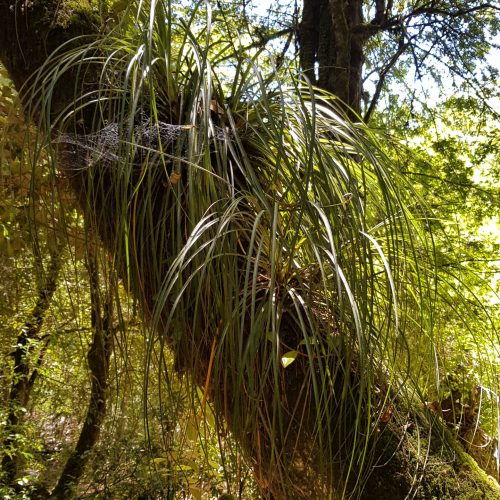
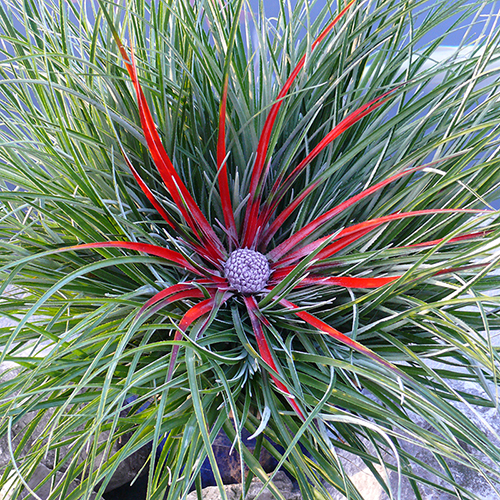
Last but by no means least, the legendary monkey puzzle tree. What a majestic and other worldly plant, so much more than the often outsized single specimens that somehow thrive, towering over 1930’s houses lining the A3 out of London. They look better as solitary specimens planted in Victorian times in a large country garden, but better still are the forests that I encounter, high up in the Andes, almost at the snow line.
I spend a whole day studying them, leaving early one morning, having been pointed in the right direction by Patricio, doorstop sandwich bouncing around comfortably in my daysack, but foolishly deciding that there will be either streams to drink from, or patches of snow to slake my thirst. It’s warm and sunny, even at 2000m above sea level, and throughout the day, I can hear water rushing down steep gorges but never quite get to it, and in the end I have to climb higher than the tree line to find tiny patches of snow to sustain me. However the Araucaria forests more than make up for my discomfort. Vast specimens, with trunks whose wrinkled, patterned bark resembles that of a sort of prehistoric elephant’s leg, the lower branches gradually fall off under the weight of snow, to leave a mushroom shaped canopy, cling photogenically to rocky outcrops with snow capped volcanoes in the background. Monkey puzzles are so called, because one Victorian botanist remarked that climbing the spiny, spiralling branches would be a puzzle, even for a monkey, and, being the national tree of Chile, it is surrounded by ancient folklore. A shame then that it is under threat from logging.
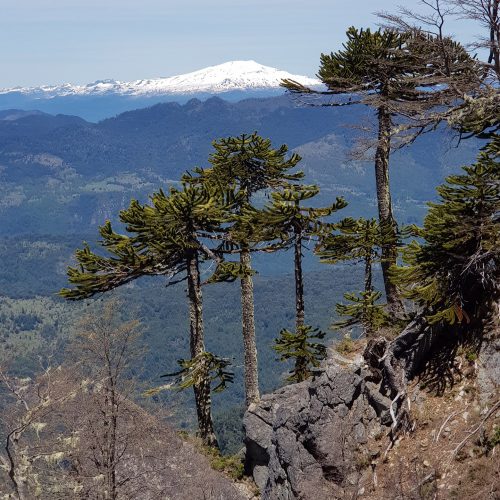
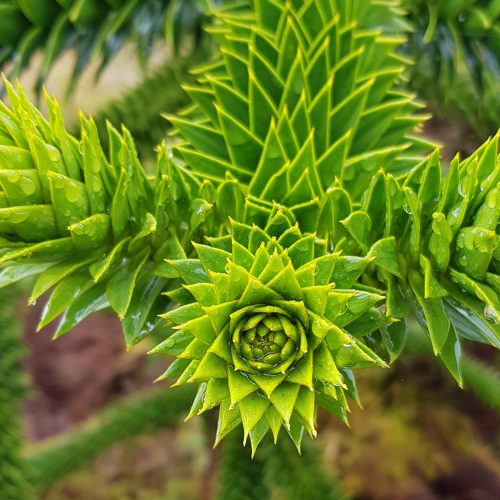
We spend our final day at the Termas Geometricas, near Pucon, famous for its natural hot springs surrounded by lush vegetation, most of which we had already spotted that week, and a striking red walkway that winds its way down the valley, between pools of varying degrees of uncomfortably hot water. The walkway was to become the inspiration for my own walkway in the garden. There’s more to discover, both north and south of where we are. I would love to walk among the giant Alerce (Fitzroya cupressoides), further south in the Valdivian temperate rain forests, or see Puya chilense with its medieval ‘instrument of torture’ looking flowers, or the Atacama superbloom, but that’s for another time.
